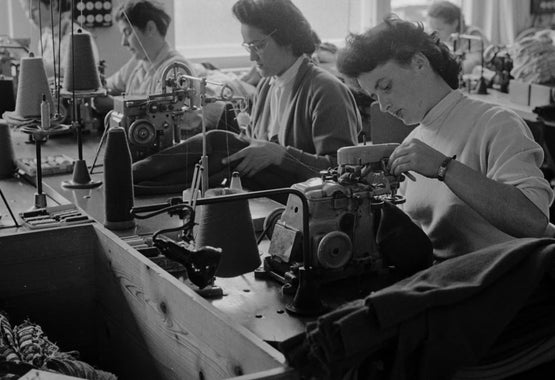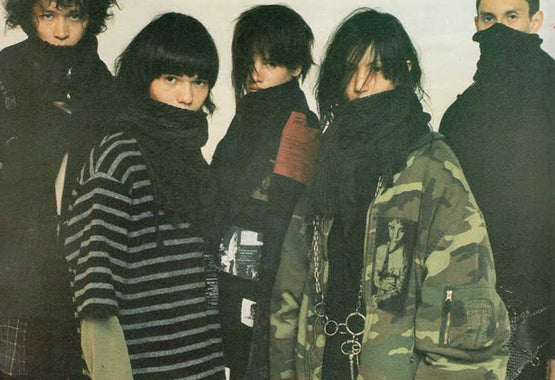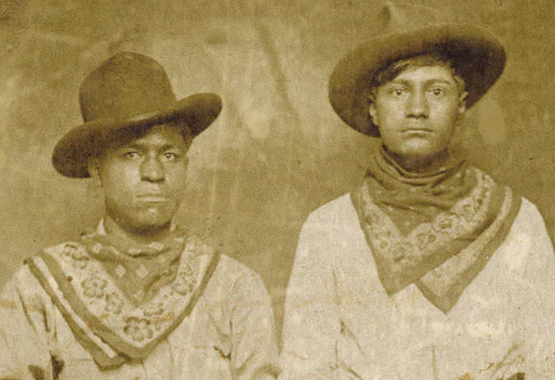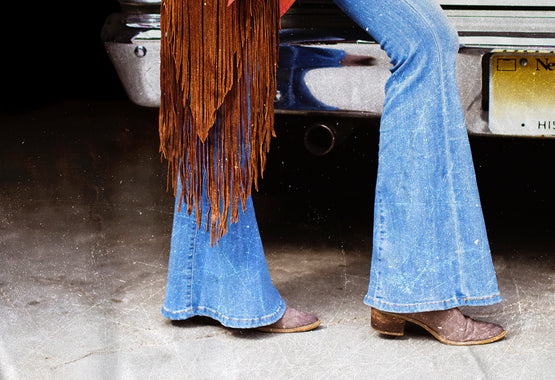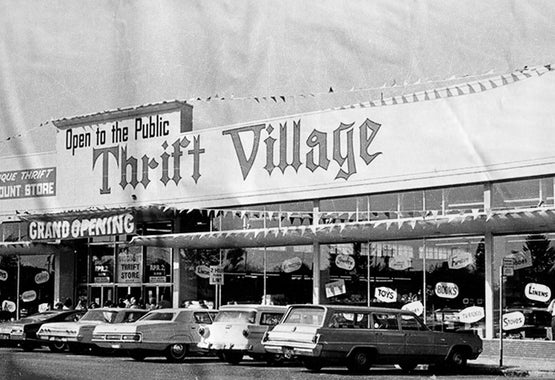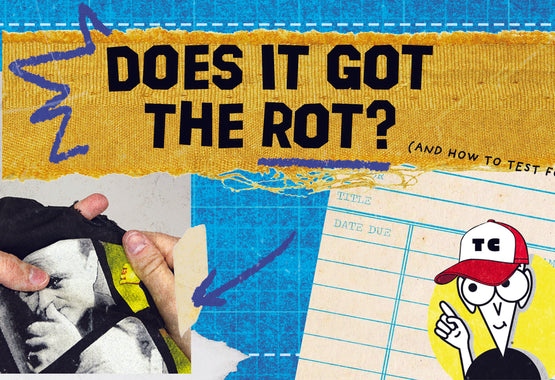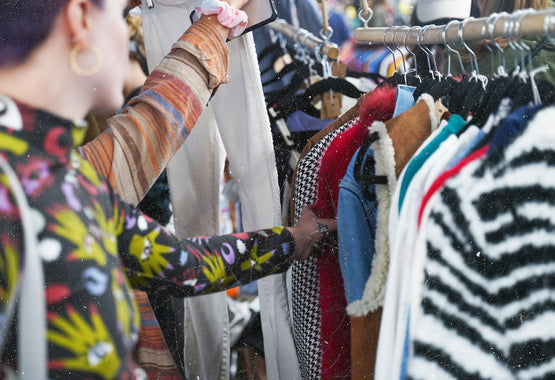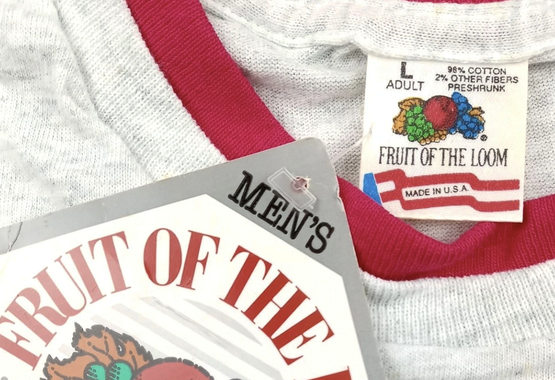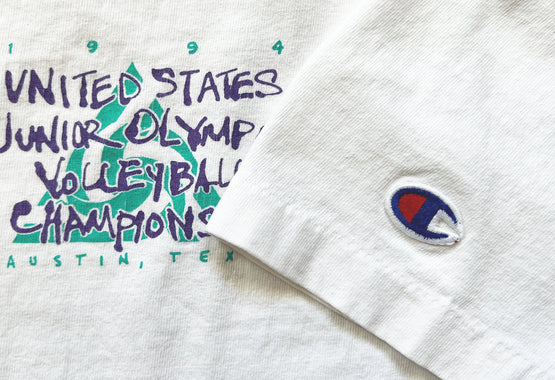Is My Nike T-shirt Vintage?


Founded in 1964 by two ambitious dudes from Oregon who saw a gaping hole in the athletic shoe industry, Nike has since become synonymous with fashion both on and off the fields of play. From grinding out a few hundred dollars in sales from the trunk of their car to now raking in over $30 billion each year, founders Phil Knight and and Bill Bowerman have no doubt etched their names forever among fashion elite.
Which is why vintage Nike pieces are so sought after by collectors. Even though the company now produces close to a billion new pieces of clothing each year, the older ones are becoming harder and harder to find. And with its high profile brand name throughout the years, bootleggers and low-end duplicators have spent decades flooding the market with fake Nike shoes and clothing, making the search even harder. That means: when you find a true vintage Nike piece, you know you’re holding onto something special.
But just how how old is that Nike tee you just found? Below we break down some of the most prevalent shirt tags in the company’s history. From the rare and iconic 1970s swoosh pinwheel where it all began, to the silky y2k double-tags that are a bit easier to find in the wild, here’s a (mostly) complete listing of vintage Nike tags.*
1978 - 1982: The Pinwheel Logo
1978 - 1983: The Orange Label
When the company began, “Nike” wasn’t even the businesses name. It was called Blue Ribbon Sports up until its relationship with footwear distributor Onitsuka Tiger came to an end in 1971. It was then the iconic “swoosh” logo was created by designer Carolyn Davidson — who was paid a whopping $35 for her efforts.
A repeated circular swoosh pattern — better known as the "pinwheel logo" — is found on the later 1970s Nike tags and into the early '80s, along with a goofy, hand-dawn-style font underneath it. During this same time, Nike was toying with a more streamlined approach, the letters chiseling out and popping off the tag with a blue and orange logo scheme. A “TM” symbol is also prominently displayed both next to the “E” and above the swoosh.

-----
1984 - 1987: The Nike Blue Label
This is where things get all kinds of crazy for the brand. Rapid expansion begins to take place in the earlier part of the 1980s, which is also when its iconic “Blue Tag” is introduced. Many of its tees are made with polyester, cotton and rayon — or any combination of the three. In 1984, the company also signs a pretty decent basketball player named Michael Jordan. You may have heard of him. That celebrity endorsement marks the beginning of its “Air” lines and eventually leads to the company’s unmistakable “Just Do It” campaign launched in 1988.
1987 - 1992: Grey Tag (printed)
1987 - 1994: Grey Tag (woven)
During the later part of the '80s, a new red logo colorway begins to replace the blue and orange, with the cleaner logo trapped inside of a gray box. Nearly all Nike pieces sold in the U.S. contain tags that claim the items are “Made in U.S.A.” (even though they might not have been), and is common practice by a lot of clothing companies until the FTC changes the rules on how they're allowed to declare counties of origin in 1997 (more on that later).
This is also a time when the company faces increased media scrutiny after activist Jeffrey Ballinger publishes a groundbreaking report on Nike’s reliance on sub-minimum wages in third-world countries to produce its clothing.
Both tags (woven and screenprinted) are of a similar design and colorway, yet the debate rages on between resellers and collectors on whether the color is "gray" or "silver" — a seemingly endless quarrel that has no real winners, just losers and purists who think that it actually matters. (It's grey, btw.)

-----
1994: The Black Label
Known to collectors simply as “The Black Label,” this tag spans exactly one year: 1994. Not much else is known about it or why it was so hastily produced and then pulled for a different design. *shrugs*

-----
Late 1990s - 2000s
The late-‘90s see a wider variation of the tag’s colors and varieties, with far more textile information included and the removal of the word “Nike” altogether (and copyright labels). As stated earlier, in 1997 the FTC changed the rules on how companies could declare their products were “Made In U.S.A.” — conceding that American made products had to be exclusively made with American materials and manufacturing processes. This is why you often see “Made in (insert country here) of U.S. components” or something of the like on tags from this era. Even on non-Nike apparel.
Later, in 2005, in response to Ballinger’s report and continued protesting of its manufacturing practices, Nike releases a list of the over 700 factories its clothing is produced in — providing a transparency no other clothing company had done before.

-----
2010s+
With hundreds of factories in 30 different countries producing close to a billion pieces of new clothing items each year, Nike tags now span countless variations and country origins. Some are directly printed onto the clothing item itself, others remain the cloth and/or silk variety of eras past.
Manufacturing in China is also on a bull run, producing over 65 percent of the world’s clothing items each year.
HOW TO SPOT A FAKE
1. The Feel: One of the easiest ways to spot a fake Nike is simply whether it’s a shit piece of clothing or not. Nike produces quality items with correct seams and quality fabrics — and this has always been true throughout its history.
2. The Tags: Newer Nike models have a robust tagging system, with instructions printed in multiple languages and sewn onto the garment evenly and securely. If it’s more of a basic washing template, chances are it’s a fake
3. The Logo: Big corporations are quite anal about branding details. Nike’s logo has the “E” overlapping the swoosh and the kerning (the spacing between individual letters) isn’t evenly spaced.
4. The Backing: If there is any embroidery on the item, flip it inside out and check out what’s called the embroidery backing. If there is excess material, if it’s torn strange, or if it just looks like a high schooler made it in shop class, it’s likely bootleg.
5. The Swoosh: Seasoned Nike hunters are able to tell a fake swoosh just by glancing at it. Take a look at a few fakes on the Internet and you’ll be able to see inconsistencies abound. The elbow of the swoosh is always the same angle on legit pieces of clothing and the two ends come to distinct points. Some fakes are good, others really are not.
*The reality when dealing with Nike tags is that there are hundreds of combinations stretched over several billion pieces of clothing made in hundreds of factories in dozens of countries — combinations of them are seemingly endless. There are also plenty of overlapping tags that were dependent on inventory available and how quickly factories were able to switch new styles into production.
No one blog, grid or graphic can ever tell the entire story.

